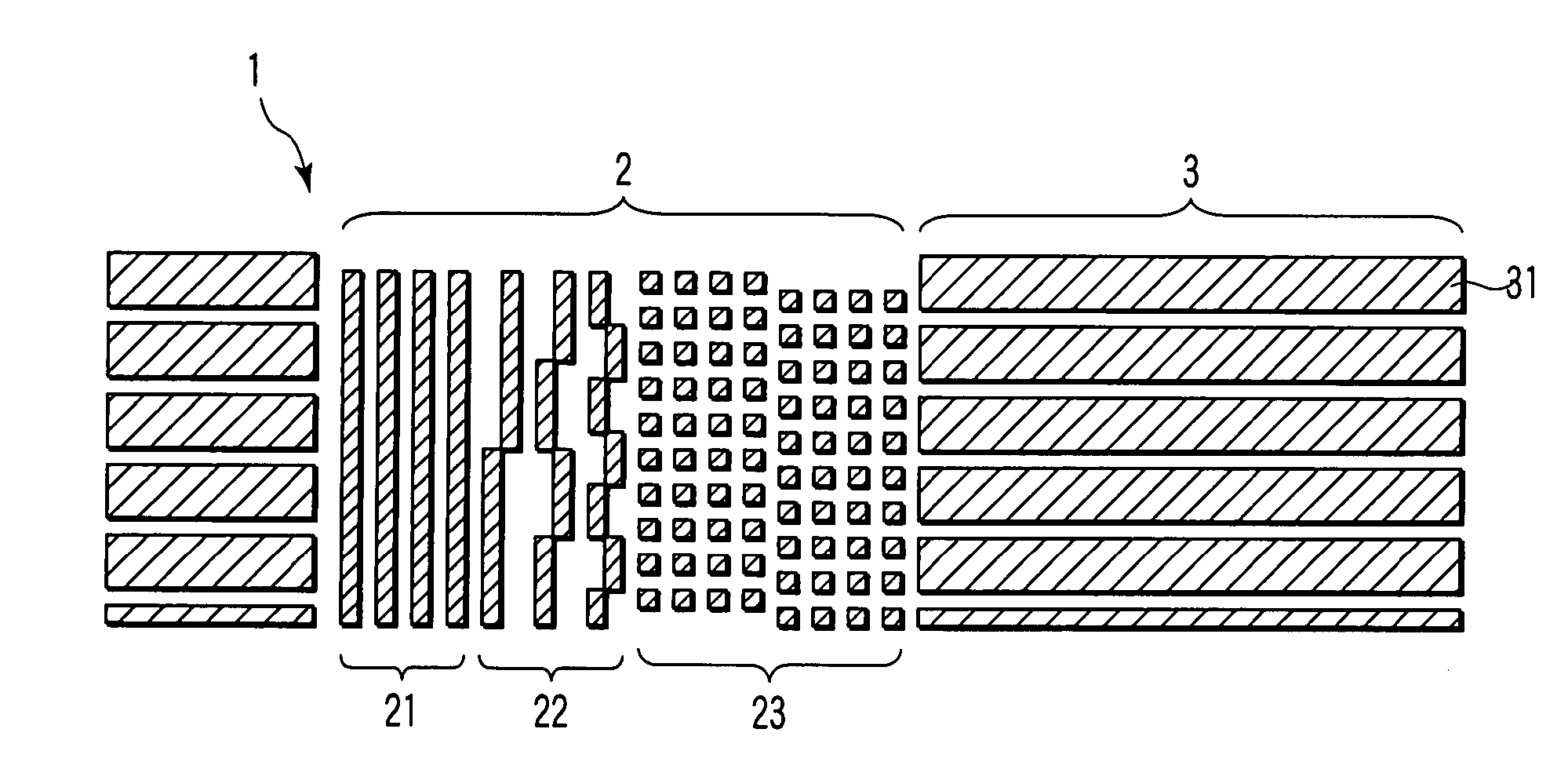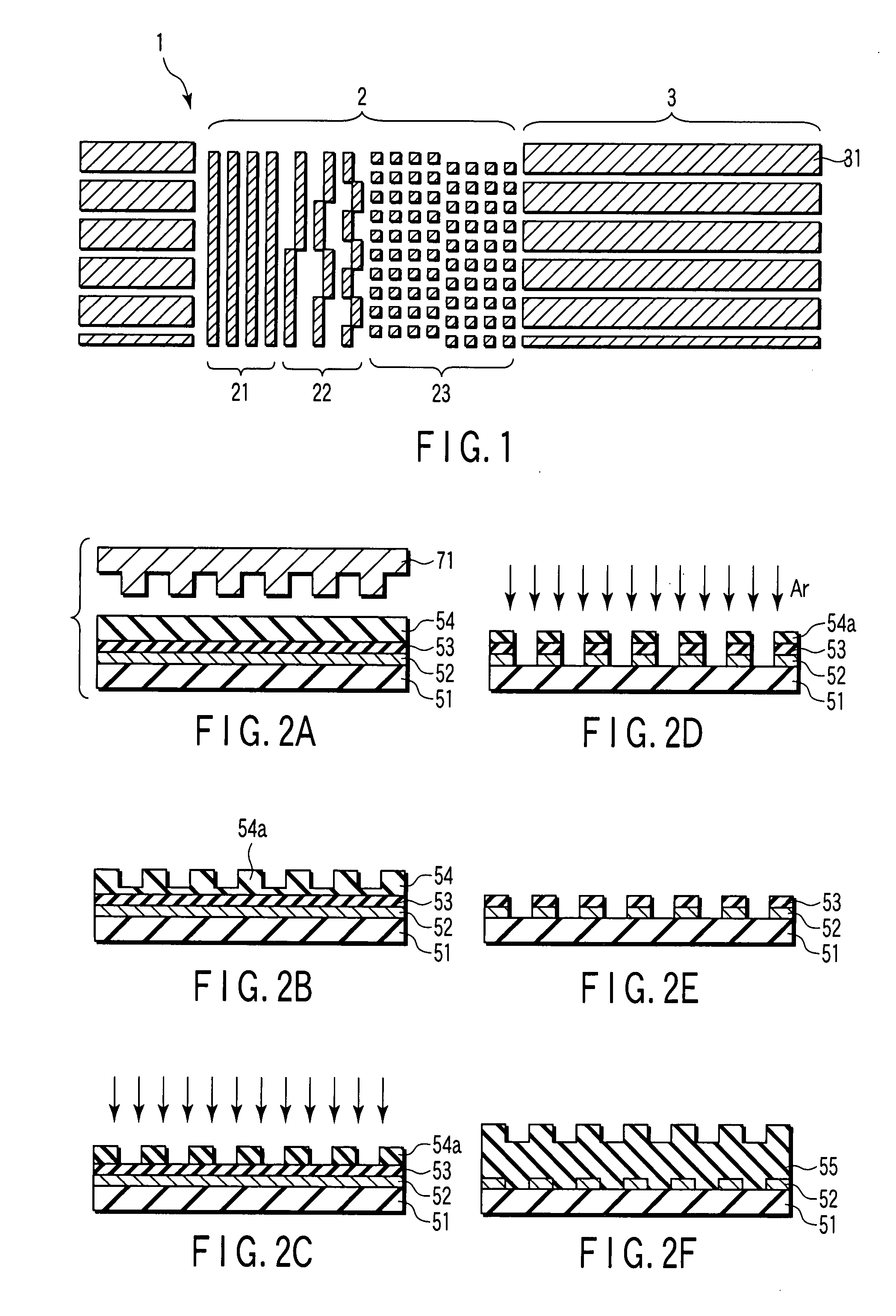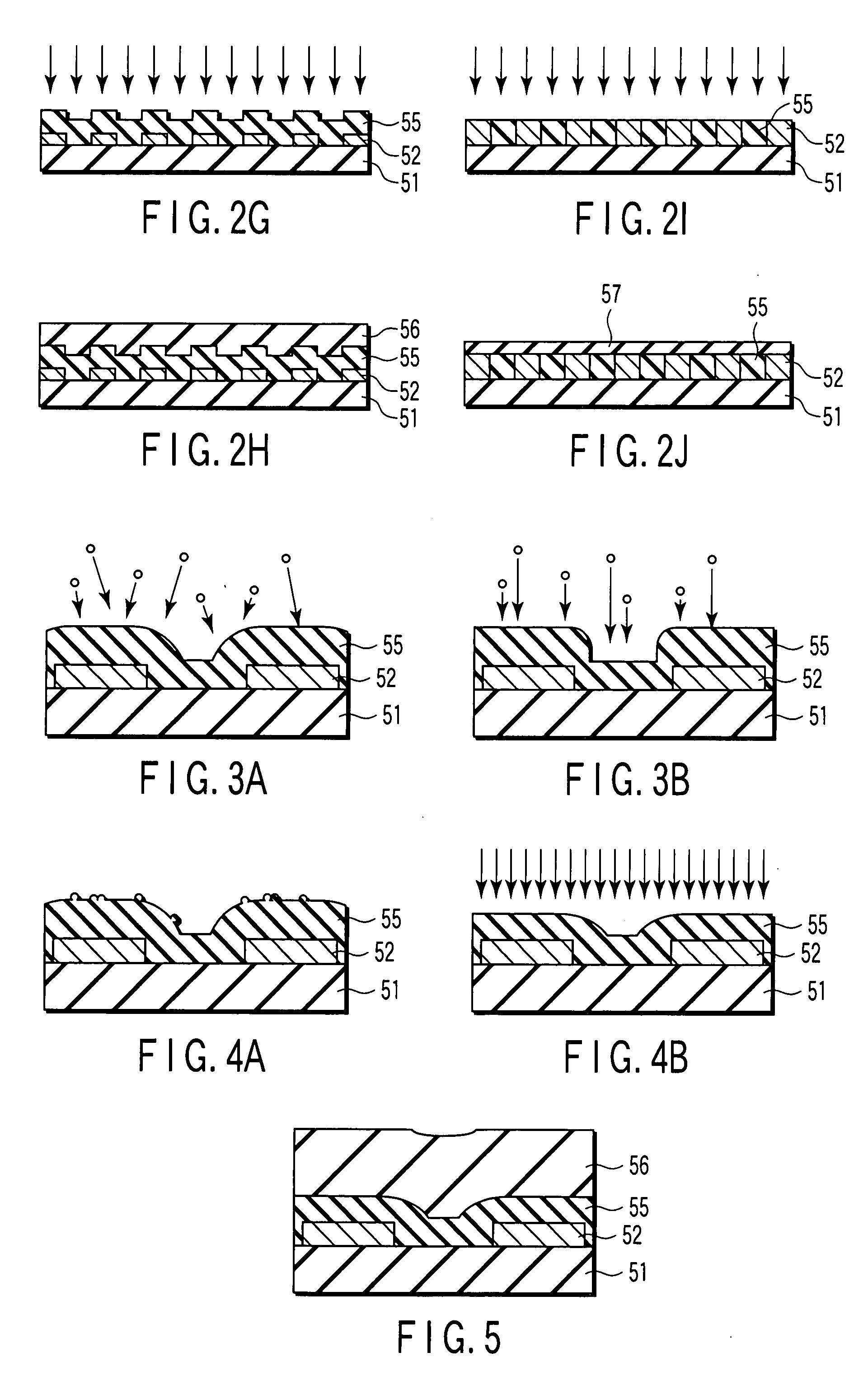Method of manufacturing patterned media
a technology of patterned media and manufacturing methods, which is applied in the manufacture of record carriers, coatings, coating carrier supports, etc., can solve the problems of affecting the fringing effect of magnetic fields from the magnetic head, the obvious problem of magnetic recording media installed on the hard disk drive, and the restriction of the improvement of track density
- Summary
- Abstract
- Description
- Claims
- Application Information
AI Technical Summary
Benefits of technology
Problems solved by technology
Method used
Image
Examples
example 1
[0075] A DTR media was manufactured by the method shown in FIGS. 2A to 2J using a stamper having patterns of protrusions and recesses corresponding to servo patterns (preamble, address, and burst) and recording tracks as shown in FIG. 1.
[0076] In the deposition process for the first nonmagnetic material 55 (FIG. 2F), 50 nm-thick carbon was deposited under an Ar pressure of as high as 7.0 Pa. In the surface reforming process (FIG. 2G), the first nonmagnetic material 55 was irradiated with Ar ions for one minute using an ECR ion gun under a microwave power of 800 W, and an accelerating voltage of 500V. In the deposition process for the second nonmagnetic material 56 (FIG. 2H), 10 nm-thick carbon was deposited under an Ar pressure of as low as 0.52 Pa. Other processes as described in FIGS. 2I and 2J were performed to manufacture the DTR media.
[0077] With respect to the resultant DTR media, a glide test was carried out by using a glide head of a designed flying height of 15 nm to whic...
example 2
[0080] A DTR media was manufactured by the same processes as those in Example 1 except that the surface reforming process (FIG. 2G) and the deposition process for the second nonmagnetic material (FIG. 2H) were repeated twice. More specifically, the following processes were performed. In the deposition process for the first nonmagnetic material 55 (FIG. 2F), 50 nm-thick carbon was deposited under an Ar pressure of as high as 7.0 Pa. In the surface reforming process (FIG. 2G), the first nonmagnetic material 55 was irradiated with Ar ions for one minute using an ECR ion gun under a microwave power of 800 W, and an accelerating voltage of 500V. In the deposition process for the second nonmagnetic material 56 (FIG. 2H), 10 nm-thick carbon was deposited under an Ar pressure of as low as 0.52 Pa. In the second surface reforming process (FIG. 2G), the second nonmagnetic material 56 was irradiated with Ar ions for one minute using an ECR ion gun under a microwave power of 800 W, and an accel...
example 3
[0082] A DTR media was manufactured as follows using the same stamper as in Example 1 and using SiO2 as a first nonmagnetic material.
[0083] In the deposition process for the first nonmagnetic material 55 (FIG. 2F), 50 nm-thick SiO2 was deposited under an Ar pressure of as high as 7.0 Pa. In the surface reforming process (FIG. 2G), the first nonmagnetic material 55 was irradiated with Ar ions for one minute using an ECR ion gun under a microwave power of 800 W, and an accelerating voltage of 500V. In the deposition process for the second nonmagnetic material 56 (FIG. 2H), 10 nm-thick carbon was deposited under an Ar pressure of as low as 0.52 Pa. Other processes as described in FIGS. 2I and 2J were performed to manufacture the DTR media.
[0084] With respect to the resultant DTR media, a glide test was carried out by using a glide head of a designed flying height of 15 nm to which an acoustic emission (AE) sensor is attached so as to examine contact of the head with the media. As a r...
PUM
 Login to View More
Login to View More Abstract
Description
Claims
Application Information
 Login to View More
Login to View More - R&D
- Intellectual Property
- Life Sciences
- Materials
- Tech Scout
- Unparalleled Data Quality
- Higher Quality Content
- 60% Fewer Hallucinations
Browse by: Latest US Patents, China's latest patents, Technical Efficacy Thesaurus, Application Domain, Technology Topic, Popular Technical Reports.
© 2025 PatSnap. All rights reserved.Legal|Privacy policy|Modern Slavery Act Transparency Statement|Sitemap|About US| Contact US: help@patsnap.com



